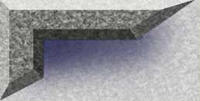|
|
Introduction
There is no right or wrong way to tune an acoustic drum. This guide is designed for beginners and/or those who are frustrated with the current sound they are getting from their acoustic drums. We've used this tried and true method for tuning acoustic drums for many years. This tuning method allows for precise tuning of drums by simply maintaining equal tension between the lugs. We hope you will find this information helpful and will consider joining our membership to learn more about the care and feeding of your acoustic drums. Feel free to experiment with what your learn here... There is no right or wrong way to tune an acoustic drum. This guide is designed for beginners and/or those who are frustrated with the current sound they are getting from their acoustic drums. We've used this tried and true method for tuning acoustic drums for many years. This tuning method allows for precise tuning of drums by simply maintaining equal tension between the lugs. We hope you will find this information helpful and will consider joining our membership to learn more about the care and feeding of your acoustic drums. Feel free to experiment with what your learn here... We recommend using new heads for best results with these tuning instructions. Be sure to verify the sizes included against your own kit. |
 |
|
 |
 |
Only the basics of drum tuning were covered here, but as you can see, the right tuning method and a fresh set of good quality heads can make all the difference to the sound of your drums. We believe that before you can build confidence in your playing, you must first have confidence in your instrument. A poor sounding instrument can't help but produce a poor sounding performance. The concepts for tuning snare and bass drums are quite similar to the above instructions, but each presents some unique challenges. Even more so, bringing all of the drums together requires some planning in order to achieve sonic harmony. |
______________________________________________________________________
| The Care of Your Snare Drum |
| A Complete Guide To Maintenance & Cleaning of Your Snare Drum |
|
A good drum is pretty much indestructible, provided that you don't drop it off the roof of your house, BUT you can take several steps to keep it in good working order. If you bought your drum new (it's still in the plastic bag), then there's a good chance that it's still clean. However, if you bought the drum USED, you don't know WHERE its been! Here's some spring cleaning tips that my percussionists do at least once a year on my high school's equipment: |
 |
|
Start by taking off the top head. With the drum key (noooo, don't use a pair of pliers!), loosen each tension rod & put it aside. Pull the rim off of the shell & wipe it down with some Windex or "Goo-Gone" (especially if you bought the drum from some giging country drummer - there's probably a ton of cigarette ashes between the head and the rim)! Next, pull the head off the drum shell and wipe down the top edge of the shell (this is called the "bearing edge"). If you really want do it right, rub a little PARAFFIN WAX on the bearing edge - just enough for a light coat, not so much that there are big globs of it. The wax will help make the head slide smoothly over the bearing edge as you tighten the head in the tuning process.
|
 |
|
Before you put the head back on the drum, give it a good inspection. Make sure that there are not cuts or small holes in the head. Usually a drum head that has a few dents in it or is "spotty" from the coating flaking off is still in good shape. If the head has a major gash in it, you can buy a new one for $10 - 15. Place the head on the drum. If you're into the visual thing, you might want to line the drumhead "logo" (if there is one) up with the snare strainer - sometime that helps when you want to quickly identify where the snares are lined up on the drum. Make sure that the bearing edge makes contact with the head completely around the drum. If you have major problems puttin the head on the shell, check to see if the head is warped (or "out of round") by rolling it on the floor. If the head isn't bad, then you might have problems with a warped shell - oops - that's a big deal (most of the pre-"free-floater" drumcorps snare drummers know what I'm talking about!). Try to get your money back!
|
 |
|
It's time to give those tension rods a good cleaning. Chances are, they are black & coated with old grease and grime! A little bit you can live with, but if you've got nothing better to do - give them a quick bath with some "grease cutting" dishwashing liquid. Remember to not use Mom's good towels - you WON'T be able to get the stains out (I'd go with an old pair of underwear or socks). If you want a quick cleaning job, just wrap your cloth around the bottom of the lug and hold tightly while you "unscrew" it out of your grip. Now inspect it closely: if all of the big chunks of gunk are gone, then you're in good shape. Before you put the tension rods back on the drum, give the rod casings a quick inspection. Wipe the gunk from the OUTSIDE of the casing, but be careful to not push any stuff INTO the receiving doohickey (what's that called?). If you REALLY need to, you can take a Q-tip with alcohol on it to swab some of it out. Now that the drum is CLEAN, put the head back on!
|
|

